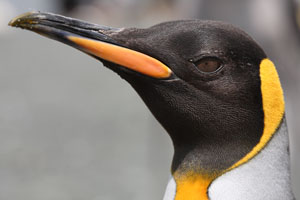
(A. p. halli)
King Penguin |
Distribution / General: |
||||||
Populations of King Penguins are distributed across the subantarctic islands.Two subspecies have been proposed. These are A. p. patagonicus (S Georgia, Falklands and S Sandwich Islands) and A. p. halli (P Edward, Marion, Crozet, Kerguelen, Macquarie and Heard Islands). All images are from the former, unless otherwise indicated.
Kings are the second largest penguins, only being surpassed by the Emperors. Larger species have existed in the past, but are now extinct. All other penguins are significantly smaller, with the 3rd largest being the Gentoo. |
Feeding: |
||||||||||||
King penguins primarily feed on small bioluminescent lanternfish which are found at a depth of 150-300 m during daytime and closer to the surface at night. A maximum diving depth of 500 m has been recorded. Like other penguins, the King penguin may also feed on alternative prey such as small squid if this is more readily available. Most of the feeding occurs during the daytime although hunting can occur at night. When rearing young chicks, adult birds may go out to sea for longer periods of up to two weeks. During the winter season there may be too little food for both adults and chicks, and the latter may have to wait for up to several months between feedings.
|
Reproduction: |
||||||||||||||||||||||||||||||||||||||||||||||||||||||||||||||||||||||||
King penguins are unusual in that their breeding cycle lasts for more than one year. Generally, these penguins will twice raise a single chick over a 3 year period. Breeding is not entirely synchronized within each colony although the majority of birds do appear to be in a similar stage of the cycle at any one time. Breeding may be with the same or different partners. King penguins reach sexual maturity at an age of about 4 years.Before breeding, birds go through a 4-5 week moult. Copulation is preceded by a brief period of courtship which is instigated by the male bird. During courtship, the male bird performs the ecstatic display with its beak pointing skyward and flippers raised. If successful, a female bird will stand opposite and both birds will shake their heads vigorously. Later, usually the male bird will waddle off ("advertising walk") swinging its head from side to side. In the final stages of courtship the birds stand next to each other and stretch upwards shaking their heads together or bend down in a synchronous manner. Bill-clapping may also take place and the whole process is accompanied by synchronous calling. Finally the male places his neck around the female and pushes her downwards. If she lets herself fall then the male may mount and copulation can begin.
Similarly to the Emperor penguin, King penguins lay a single egg of about 300 grams and keep it on their feet during the 55 day incubation period. Consequently no nest is required. Birds are nevertheless observed to be spread evenly in colonies. This is because during incubation and brooding, the King penguin displays territorial behaviour and maintains pecking distance to other birds. As penguins walk through the colony they may be pecked or hit by flippers of other penguins as they pass.
Once the chick has hatched it remains on the parents feet for up to 8 weeks before eventually joining other chicks in a creche. King penguin chicks do however not usually huddle like Emperor penguin chicks, presumably since they are subject to less extreme temperatures.
The parents continue to feed the chicks in the creche but no longer guard them. At this stage, both parents may go on food forays at the same time, whilst during incubation and brooding, the egg or chick is always on the feet of one parent whilst the other is at sea.
As already mentioned, unlike in most other penguin species, Adult King Penguins moult before breeding. Moulting is necessary to replace the worn plumage which may be no longer fully watertight. Chicks on the other hand have to Moult into their juvenile plumage before they are able to fledge.
|
General Behaviour: |
||||||||||||||||||||||||||||||||
King penguins are inquisitive birds that are relatively confident in their approach towards human beings. A King penguin can display aggression or uneasiness in a number of ways. Gyratory motion of the head may precede pecking and birds may also flap their wings as a warning sign. A bird may also stretch its neck towards an opponent whilst looking directly at it and slightly opening its flippers in what is called the direct stare display. Slight discomfort may be displayed by preening of the flippers or rubbing of head on shoulder.
|
Threats: |
||||||
The King penguin is currently not considered a threatened species.Adult King penguins may be eaten by leopard seals or killer whales. Eggs and young chicks can fall victim to various types of gull, in particular Skuas, and also to giant petrels. Recent reports indicate that male Antarctic Fur Seals are preying on King Penguins at sea at Possession Island in the Indian Ocean. These seals have previously only been observed to prey on penguins on land.
King Penguins are only slightly unsettled by humans, as long as these stay at the periphery of the colony and move slowly. Penguins may indeed voluntarily interact with visitors due to their inquisitive nature. They may peck or grab hold of clothing and pull on it. Properly managed tourism is not thought to have any significant impact on breeding success.Fortunately, only few King penguins get caught in fishing nets and their prey is not widely exploited by commercial fisheries at present. |
Where To See: |
||||||||||||||||
King Penguin colonies can be visited on various subantarctic islands. The most accessible colony is on the Falkland islands, yet this is only a small colony with several hundred birds. Larger reachable colonies are found on Macquarie island and in particular South Georgia, both of which are reachable by ship. Several companies offer cruises which include these destinations. Macquarie Island is probably best visited on cruises by New Zealand based operator Heritage Expeditions, but can also be visited en route to the Antarctic on other ships. Landings may be by the Isthmus Australian Antarctic Division Research Station or at Sandy Bay. Many operators offer cruises which pass S. Georgia, usually in combination with visits to the Falklands and Antarctic Peninsula. Since King Penguins breed on open coastal plains, viewing is easy once one is on land. Poor weather conditions may however prevent landing. Usually, cruise ships visiting S. Georgia will try and land passengers at a number of different King Penguin colonies (e.g. Right Whale Bay, Salisbury Plain, St. Andrews Bay or Gold Harbour), some of which may contain tens of thousands of birds.
|
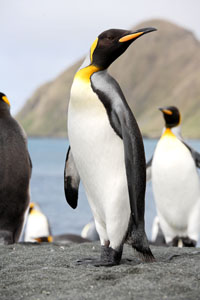 |
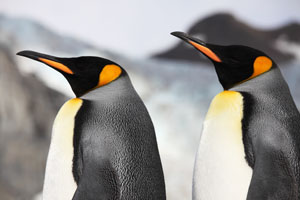 |
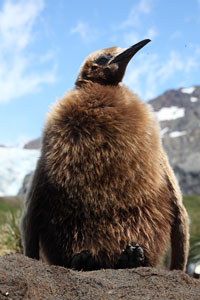 |
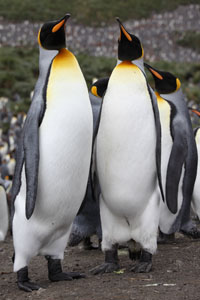 |
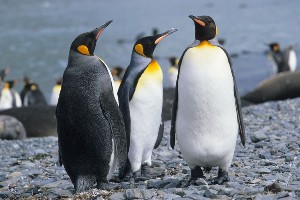 |
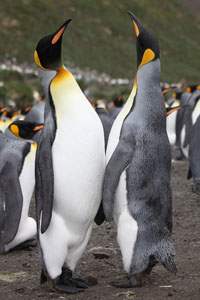 |
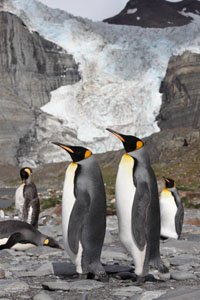 |
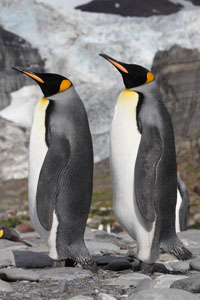 |
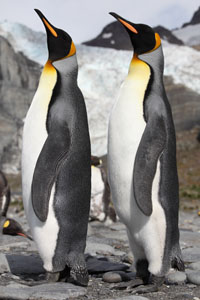 |
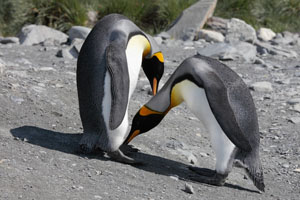 |
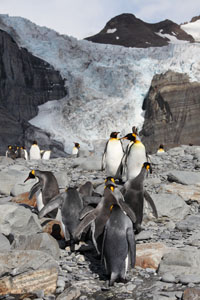 |
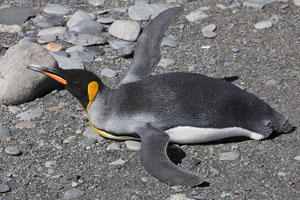 |
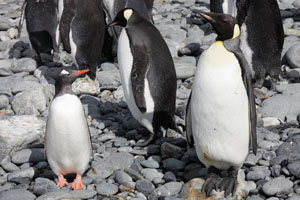 |
||